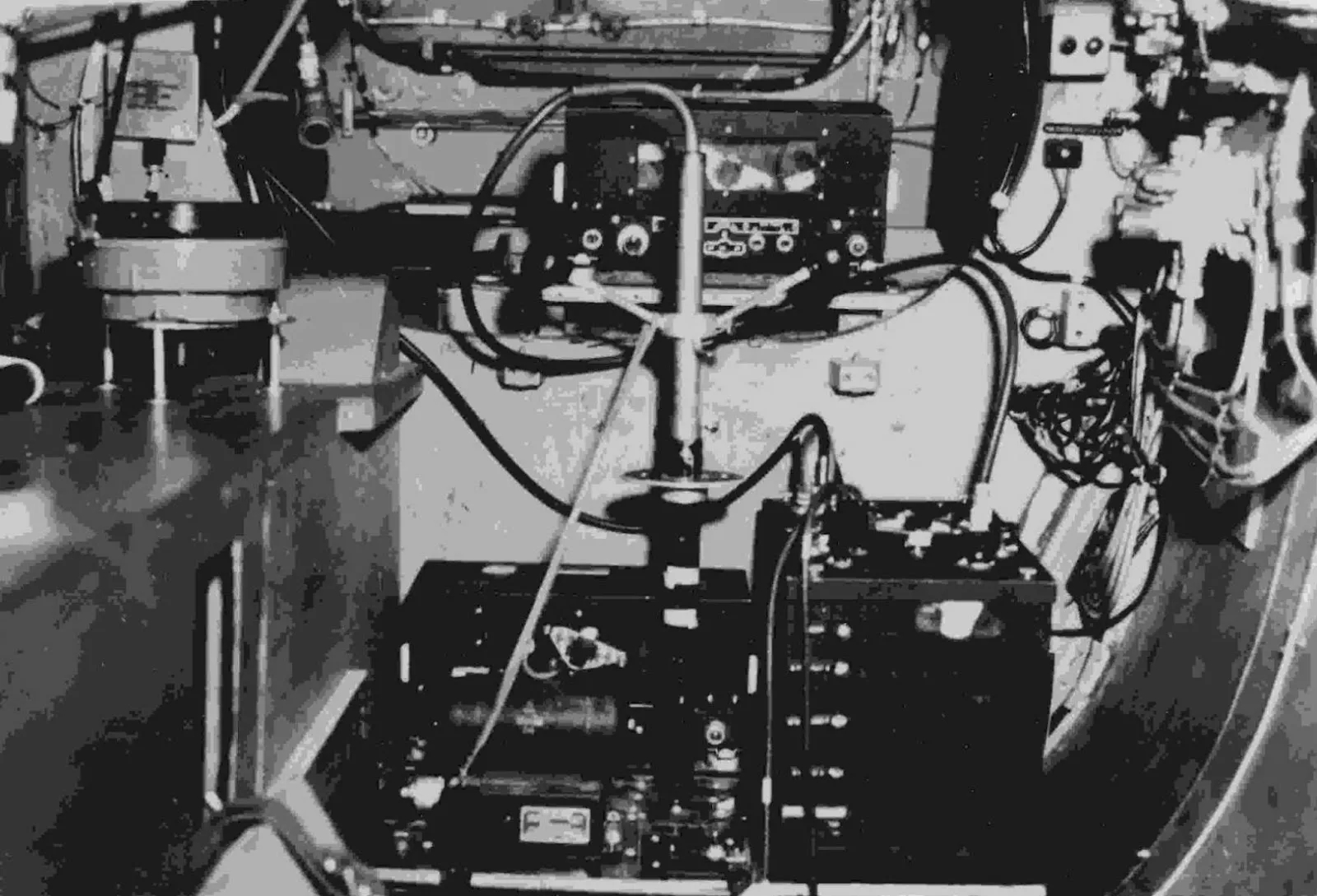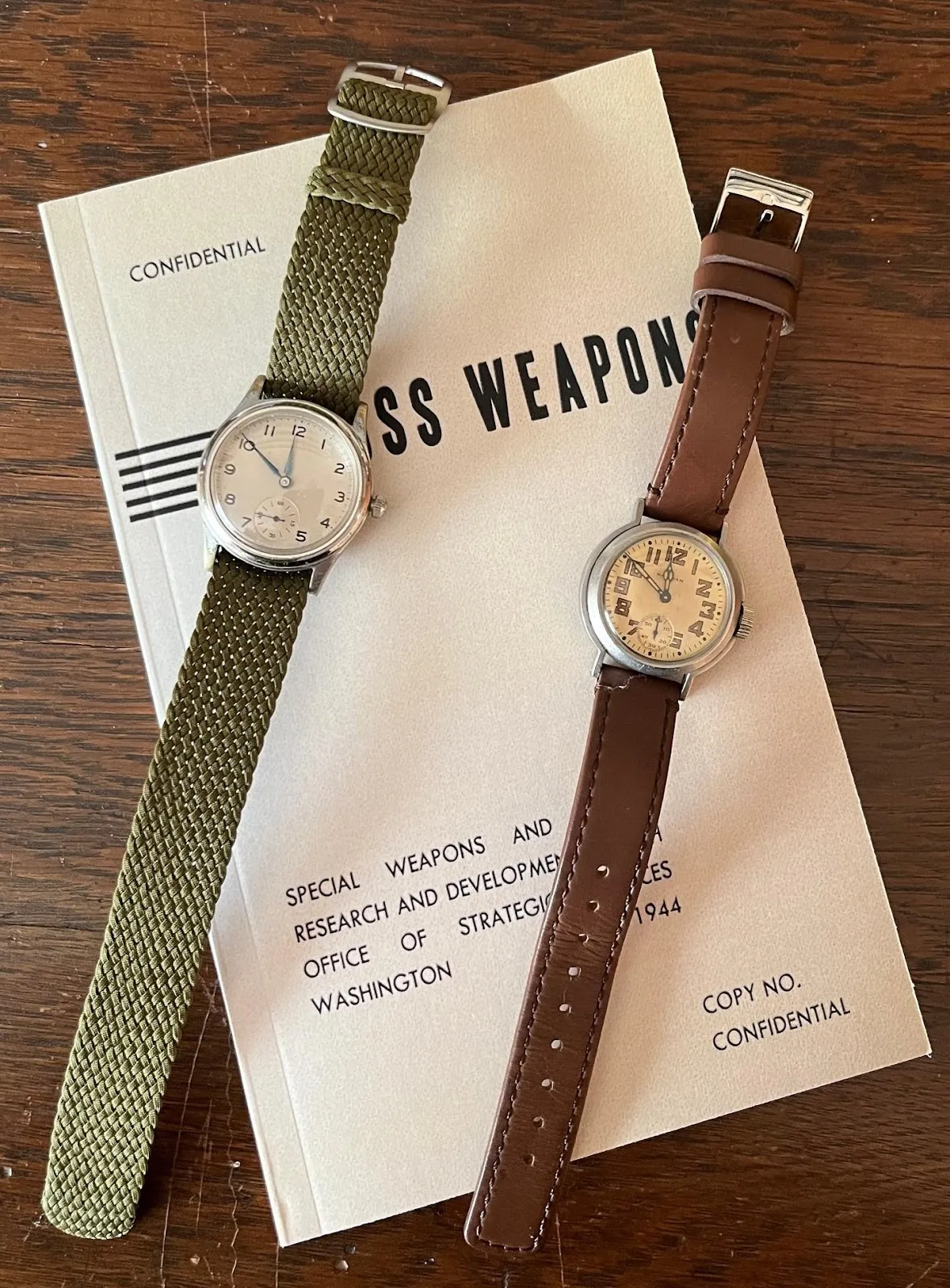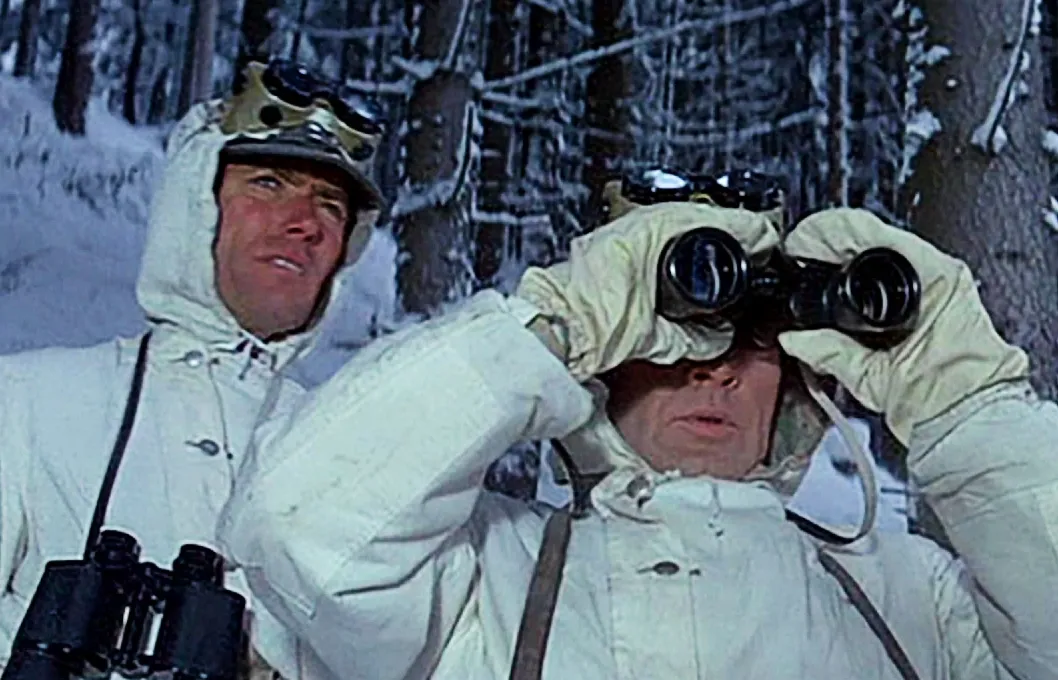Two Vital WWII Spy Tools Seen Through The Eyes of a Former CIA Officer
Ex-senior CIA officer John R. Seeger, a SPYEX consultant, paratrooper in the 82nd Airborne, and author of the MIKE4 series of spy novels, highlights the two absolutely necessary pieces of WWII kit for intelligence operatives: the radio and a timepiece.
Most often when we see articles related to the Allied operations behind enemy lines in World War II, we see photos of well-armed resistance fighters and their US or UK colleagues. Alternatively, we see pre-flight or even in-flight photos of special operations teams on their way to parachute into the darkness. Some of these photos were staged, but they do emphasize a part of the special operations effort that is by far the most dramatic. A quick review of any of the memoirs published after the war underscores the fact that the lives of the resistance and their allied partners were mostly silent, undercover operations often punctuated by being on the run from German or Italian security forces.
Many in the resistance died in combat but most died captured because of tradecraft mistakes, denunciation by traitors, or dedicated counterespionage efforts by their adversaries. For the sake of argument, this article will not focus on the weapons, explosives, or even the sophisticated gadgets created in the laboratories in the US, Canada, or the UK. Rather, it will focus on two relatively mundane but essential pieces of kit: the radio and a timepiece.

In the first 18 months of the war in Europe, it was possible to provide reporting even along escape and evasion routes that ran from the Nazi-occupied territories, through Vichy-controlled France, and into neutral Spain or Portugal. From there, the evader could contact British intelligence, Free French representatives, or even US Embassy personnel.
Eventually, they would attend debriefings by their respective handlers - whether the UK organizations or the exiled Free French organization. The escape lines were informal and unpredictable and by the second year of the war, they were exceptionally dangerous.
By 1941, there were three British organizations involved in operations in occupied Europe: the Secret Intelligence Service (often called MI6), the Special Operations Executive (SOE), and a formal UK military escape and evasion organization (MI9).
The Free French intelligence organization eventually established itself in exile as the Central Bureau of Intelligence and Operations (BCRA).
The suitcase radio
By the Fall of 1941, there were also American intelligence officers from the Coordinator of Information (soon to be the Office of Strategic Services) serving in neutral countries encircling occupied Europe. However, the informal networks established between 1939 and 1941 required a far more reliable and timely method of communication.
.webp)
The result was the creation of the ‘suitcase’ radio. Allied suitcase radios were small High Frequency (HF) radio sets designed exclusively for Morse code transmission.
Rugged, reliable, and easy to disguise, they were informally called ‘suitcase radios’ because they were built into a 1930s-sized suitcase (what we could now consider a briefcase) and could operate for up to 500 miles.
The British set used by the SOE, named the Wireless Equipment Type A MKII, served SOE and early OSS operators in France throughout the war.
The OSS SSTR-4 and SSTR-5 radios
Once the US began conducting intelligence operations behind enemy lines through the Office of Strategic Services, OSS Research and Development created a different, slightly lighter (2.75 lbs) and more robust radio set designated SSTR-4 and, eventually, the SSTR-5 used in the China-Burma-India theater.
In the Pacific theater, Australian and New Zealander Coastwatchers maintained the most important clandestine radio networks. Due to their remote locations, the Coastwatchers used a much larger, longer-range radio known as the Teleradio 3BZ provided by the Royal Australian Navy.
Radio communication provided agents behind enemy lines with direct contact with their handlers in the UK or, in the case of clandestine teams in the CBI and Pacific Theaters with their respective military commanders. They could provide encoded intelligence reports and receive follow-on requirements. Further, they could make requests for personnel and equipment airdrops or, if they had access to remote coastlines, delivery by sea. Resupply was essential for two reasons: equipment, arms, and ammunition were essential for maintaining a competent fighting force and resupply was a critical means of maintaining resistance morale. Once aircraft were sent on a resupply mission, SOE agents directed Royal Air Force aircraft toward drop zones using a short-range system known as an S-Phone.
In the last two years of the war, OSS developed a short-range, very high-frequency radio known as the Joan-Eleanor system which allowed OSS operators on the ground to talk directly to the crew special operation squadron of the US Army Air Force known as the Carpetbaggers. This small radio system completed the link between the men and women behind the lines and their headquarters' lifeline.

There are dozens of memoirs and special operations histories that document the challenges when suitcase radios were either lost or damaged during parachute operations. When that happened, communication was lost and the resistance and their Allies were cut off from any help.
The best radio communications would be useless and, perhaps, deadly for those behind the lines if the radio operator did not follow radio procedure. Radio procedure followed a strict schedule for broadcasting and receiving messages. Axis direction-finding tactics, techniques, and procedures were sophisticated, and a clandestine radio station that operated too long or at the wrong time was destined to be located.
"The brand new social experience where you activate your gaming skills as you train like a spy."
- TimeOut
Take on thrilling, high-energy espionage challenges across different game zones.


The humble timepiece
For this reason, the humble timepiece - whether wristwatch or pocket watch - was an essential piece of equipment. Espionage operations are best understood as precise, timed activities.
Clandestine meetings and resupply operations were identified by precise date, place, and time windows. This meant that a rugged and reliable watch that was set to a specific time hack (courtesy of the BBC hourly broadcast) was more important than any weapon or spy gadget. Most of the watches used by the SOE and the OSS special operations troops were either military-issue watches or personal watches of the operators themselves. The majority of photographs taken of those men and women in the field show either the UK Army Time Piece (ATP) or the US military A7 wristwatches.
.webp)
In the case of MI6, MI9, and the small number of OSS espionage cadres that lived undercover in the cities of occupied Europe, a military-style wristwatch would have been an easy way for the security service to identify a spy. Therefore, MI6 and OSS ‘dispatchers’ (the teams based in the UK) would review each piece of clothing and equipment that an agent would carry just before departure to be sure it matched the agent’s cover persona.
For that reason, the watches for these individuals would have been European in manufacture, most probably pocket watches or, in the case of women undercover agents, delicate jewelry-style wristwatches of the 1930s. Probably of equal importance was the fact that these timepieces had to be sufficiently low profile to avoid catching the attention of the Nazi and collaborator services, and to avoid theft or confiscation.

While there are plenty of articles and scores of books written about the weapons and equipment of the Allied special operations and intelligence units of World War II, two mundane pieces of kit were the most important.
If an agent could not communicate with their headquarters, that agent’s life was at risk for no reason. And if that agent could not arrive at a place at a select time or could not turn on his radio set in time to receive a report, once again, there was risk with no hope of gain.
A reliable radio set and a reliable watch were the two absolutely necessary pieces of kit. The rest could be acquired through resupply.
***
SPYEX consultant J.R. Seeger, author of the MIKE4 series of novels, is a former CIA division chief of operations and an expert on counterintelligence, insider threats, counterterrorism, and unit leadership. He can be booked at SPYEX.com for training, consulting, and speaking engagements.
SPYSCAPE+

Join now to get True Spies episodes early and ad-free every week, plus subscriber-only Debriefs and Q&As to bring you closer to your favorite spies and stories from the show. You’ll also get our exclusive series The Razumov Files and The Great James Bond Car Robbery!


Gadgets & Gifts
Explore a world of secrets together. Navigate through interactive exhibits and missions to discover your spy roles.
Your Spy Skills
We all have valuable spy skills - your mission is to discover yours. See if you have what it takes to be a secret agent, with our authentic spy skills evaluation* developed by a former Head of Training at British Intelligence. It's FREE so share & compare with friends now!
* Find more information about the scientific methods behind the evaluation here.


Stay Connected
Follow us for the latest
TIKTOK
INSTAGRAM
X
FACEBOOK
YOUTUBE